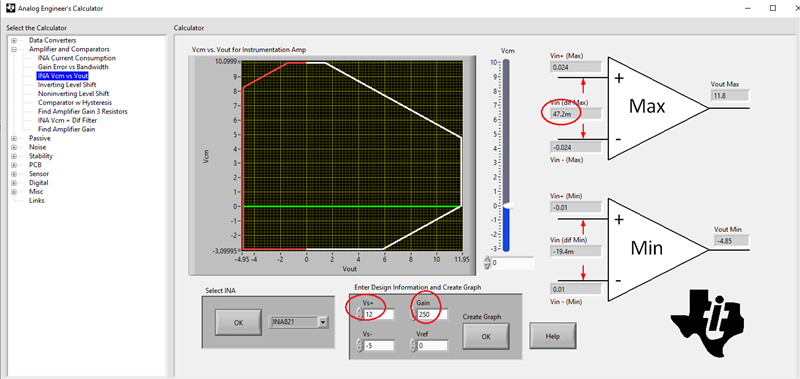Other Parts Discussed in Thread: OPA187
Hello, we have recently developed a prototype board that include an INA821 used as DC amplifier with gain 500, We misread the datasheet and we thought that the Vcm was +/- 2V around the supply voltages (-5V / +33V) : ![]()
We need a simple DC amplifier that amplify by 500 a single ended signal (0mV-60mV)
Is there any drop in replacement available for our purpose?





